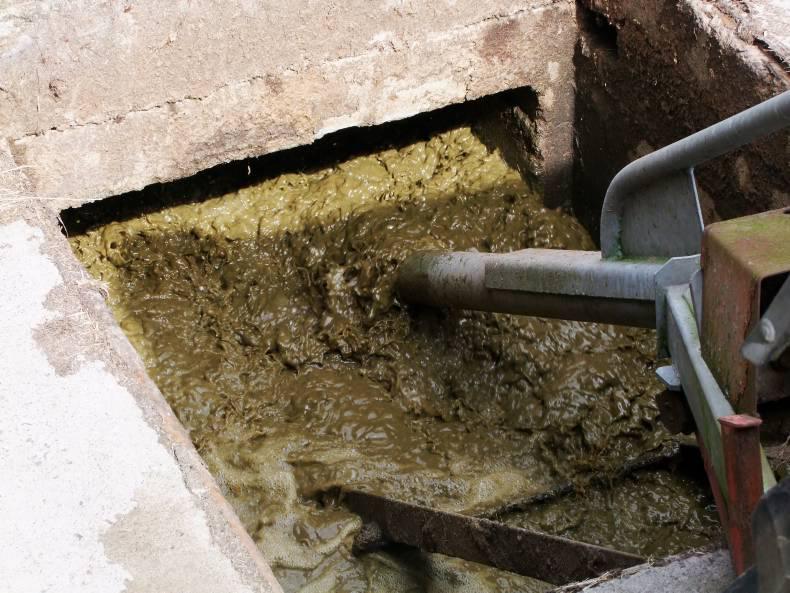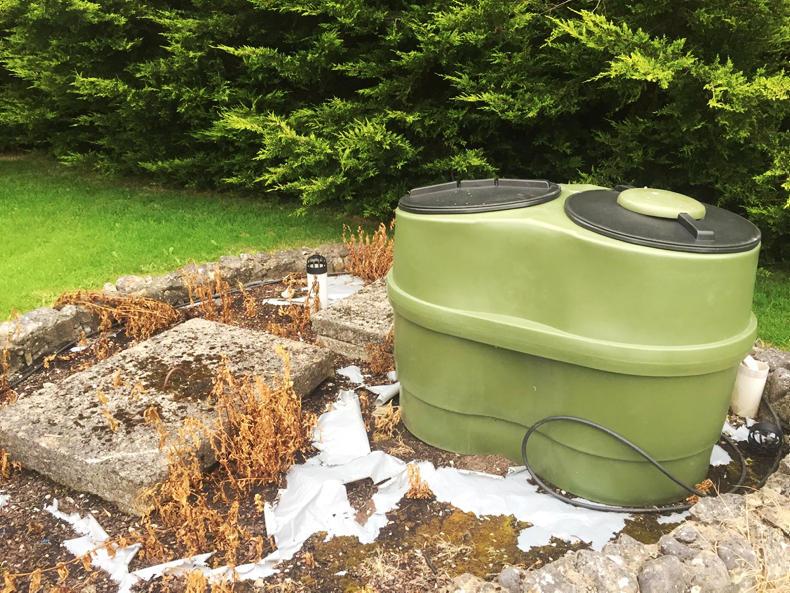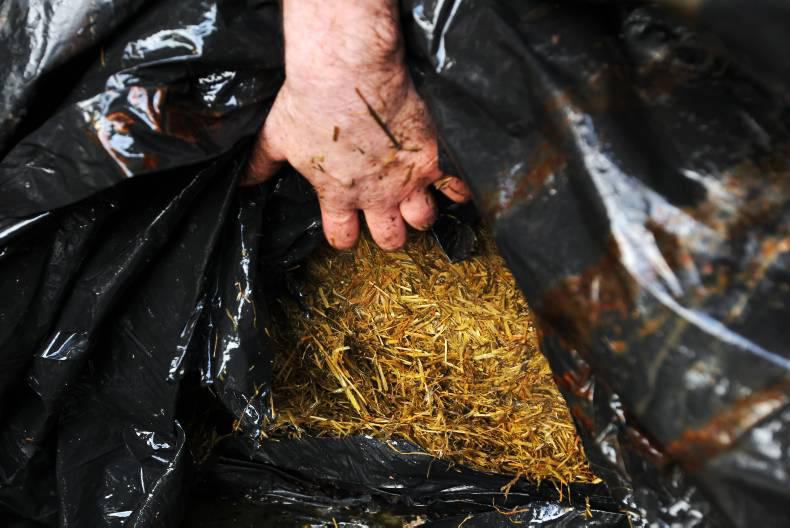Slurry agitation can be problematic on many farms around the country due to awkward tank design or very dry slurry. Some farmers spend hours agitating very thick slurry. Adding water from time to time would help in a lot of cases. But in some situations farmers find that even with additional water agitating can be difficult.
Slurry additives, more commonly known as slurry bugs, are not a new phenomenon on Irish farms, but have been receiving more attention recently.
The Irish Farmers Journal called to farms in Limerick that are using a slurry additive in their slurry. The farmers mainly use it for making slurry agitation easier, but some claim that it also helps to reduce the nitrogen loss in slurry.
Ned Cagney from Quality Farm Solutions claims that farmers who add his additive to their slurry find it has a number of advantages. “The natural bacteria breaks down slurry particles and reduces the amount of separation that occurs when slurry is left sitting in the tank,” says Ned.
He says this means that existing bacteria present in the slurry to be treated are dominated by the additional bacteria in the product to promote a better and faster biological oxidation without generating any dangerous by-products. The additional bacteria are naturally occurring organisms that degrade organic compounds, which have previously been difficult to biodegrade.
He says: “This reduces the need for mechanical agitation and it takes approximately six weeks to work following application. It also helps to hold on to ammonia that is lost in the tank during slurry storage, which makes it more available to the soil when spread.
How it’s applied
Ned Strackpoll from Coolcappagh, Co Limerick, says that he has been using the slurry additive since 2008.
He keeps 280 head of cattle between dairy cows and beef cattle that he winters. He got it because he found, initially, that his tank was difficult to agitate due to channels in the tank.
Ned says: “Since I started using the additive I no longer have to agitate my slurry, but if I do it takes less than an hour.” He showed me how he uses it; first, he gets a two-gallon capacity bucket of lukewarm water. A 1kg tub of slurry additive is mixed into the water and it is left for half an hour for the bacteria to come alive.
After that, Ned knows the bacteria are starting to work because bubbles appear at the top of the bucket. The contents of the bucket are then poured through the slats into the tank below. In total, he uses six tubs of additive for his two slurry tanks at a cost of €450 per year.
The additive is applied just once, at the beginning of the housing season. “I don’t have an agitator but I have a slurry tanker, so I find this is great for saving on contractor costs,” he says.
“Once I keep enough water in the tank, conditions are right for the bugs to work away,” Ned explains.
Less agitating:
In Castlemahon, Co Limerick Tony Harnett started using the slurry additive last year. Tony said that in the past he had trouble agitating his two slurry tanks in his double-sided shed. Each tank is 60ft long, 12ft wide and 8ft deep and at capacity hold 35,800 gallons of slurry.
Tony said he usually feeds very dry feed to his 125 bullocks, including high dry matter silage, rolled barley and distillers, which he said made the slurry very dry and extremely difficult to agitate.
“Every year I would have nightmares trying to get the slurry out. The usual routine was agitate for two to three hours and spread four or five loads (one load = 2,250 gallons) to bring down the level of the slurry. I would then have to draw four loads of water to the tanks and start agitating again. Because the slurry was so thick, this process could be repeated up to five times. I never felt I was making any progress with the slurry,” he explained.
In the winter of 2014 he started using the additive in his slurry.
At the start of the housing season in 2014 Tony said he put three loads of water into each tank and used three tubs of additive at a cost of €225 (€75/tub). This year when he went to agitate his slurry it only took one hour per tank and he didn’t have to draw any more water to the tank during agitation. The water was added at the start just to ensure the bugs in the additive would get to work.
“I think the additive made a huge difference in my situation by reducing the separation of solids from liquids in the slurry, which saved me hours and possibly days of drawing water and agitating” said Tony.
In Table 1 the costs were compared if Tony was to hire a contractor to agitate his slurry. A typical cost of €45/hour was used. The cost of drawing water was not factored into the costings but would add significantly to the total cost.
Comment
Slurry agitation can definitely be a problem on some farms. I think all farmers should make sure that there is enough water in their tank before looking to slurry additives to solve their problems. There are different slurry additives on the market and they can play a role in reducing the separation of liquids and solids, and may also have a role for difficult slurry tanks where an agitator cannot reach. However, the additives will not work if conditions for their growth are not right.
Cagney admits he has had cases where his slurry additive was applied and the farmer said it didn’t have a positive effect on his slurry in terms of ease of agitation.
Cagney believes the reason they didn’t work effectively is because they were not introduced under the correct conditions. He says it’s important when using any additive that there is water and some slurry present from the start to entice the bugs to breakdown the particles to produce a more consistent and runny slurry.
The pH of the slurry has to be correct as well – ideally between five and seven. The additive won’t work where there is high concentrations of silage effluent or dairy parlour washings entering a tank. Some companies test slurry before applying additives to give prior advice if it is suitable or not.














SHARING OPTIONS